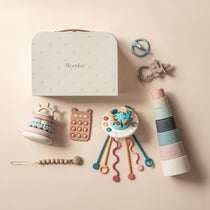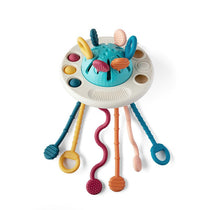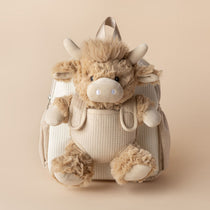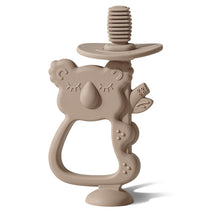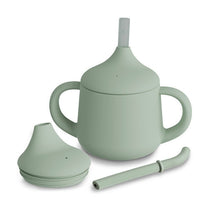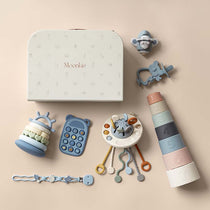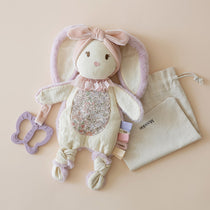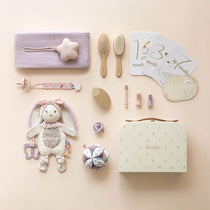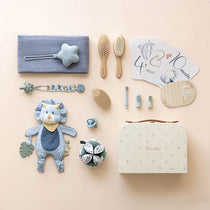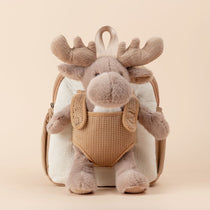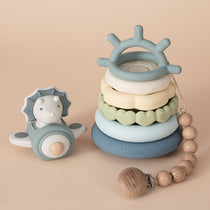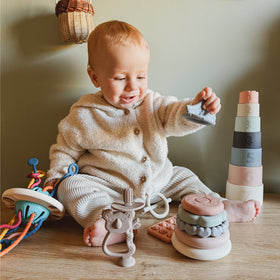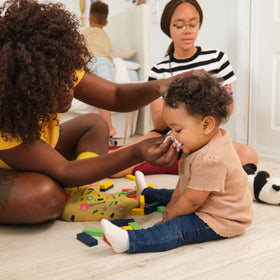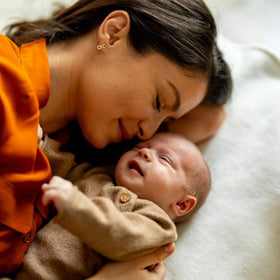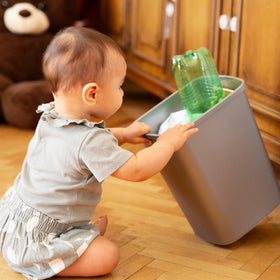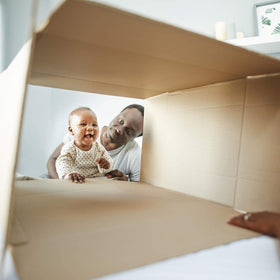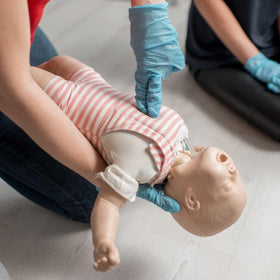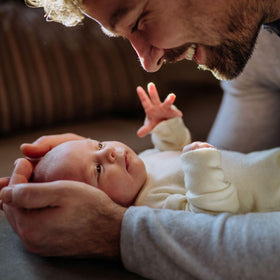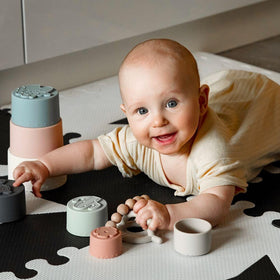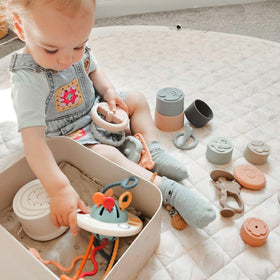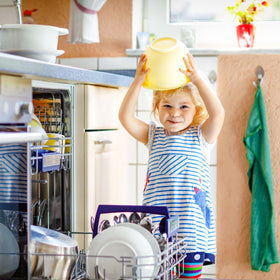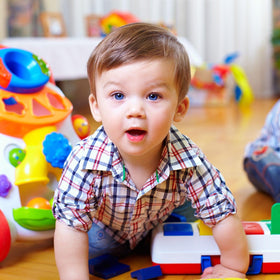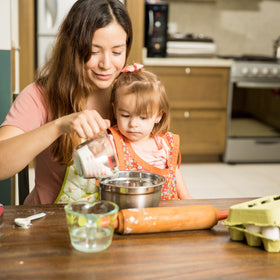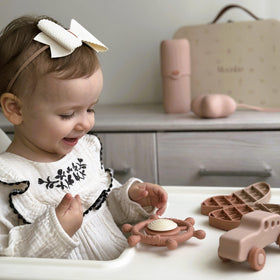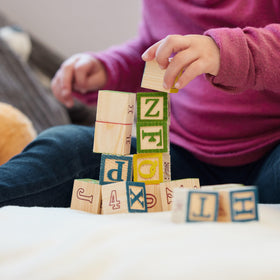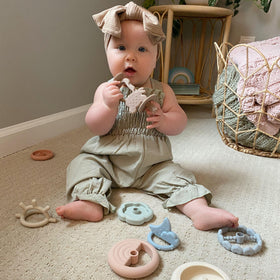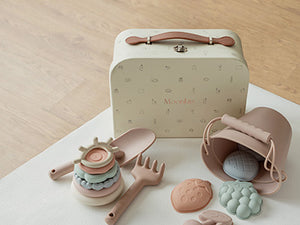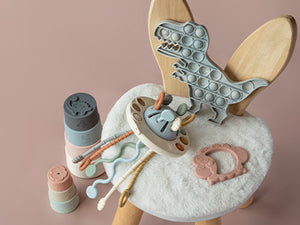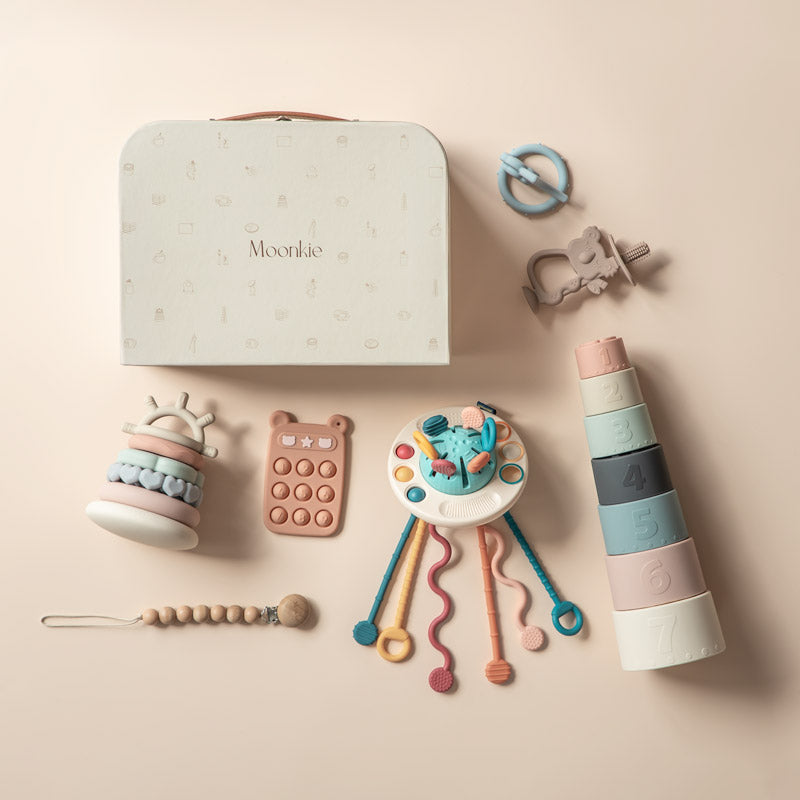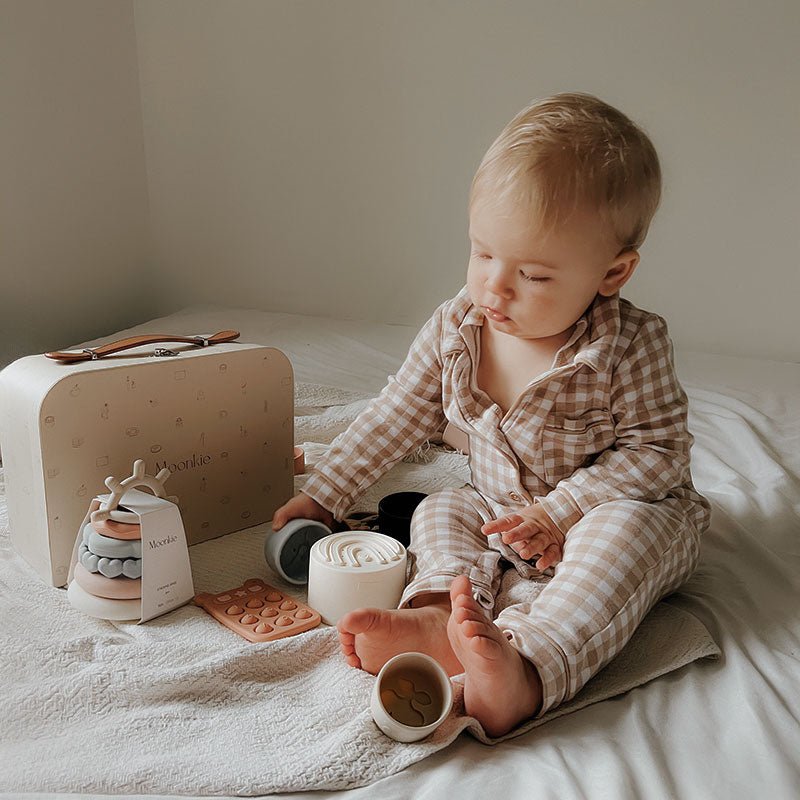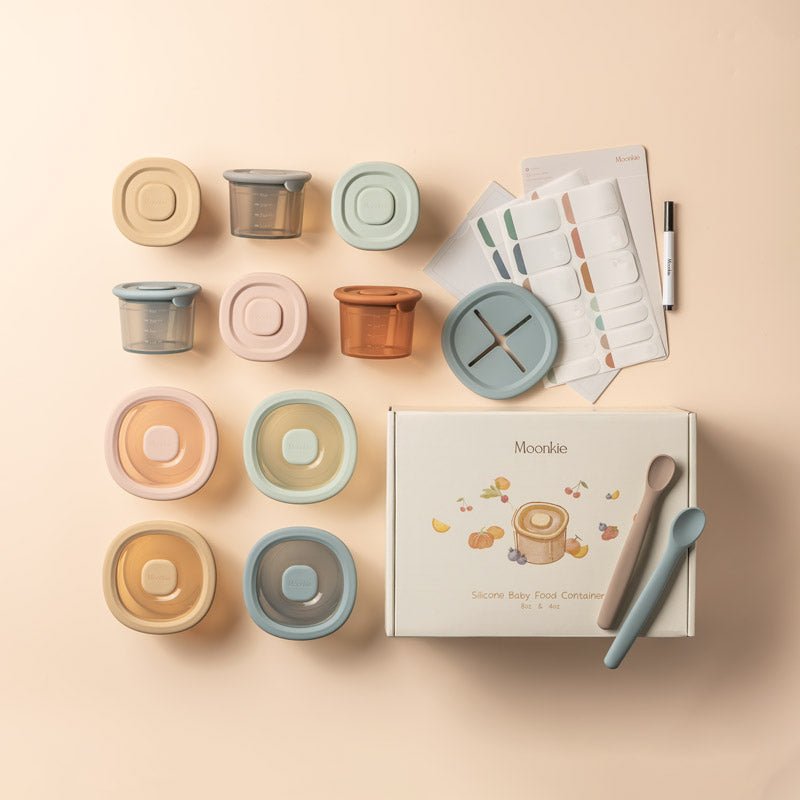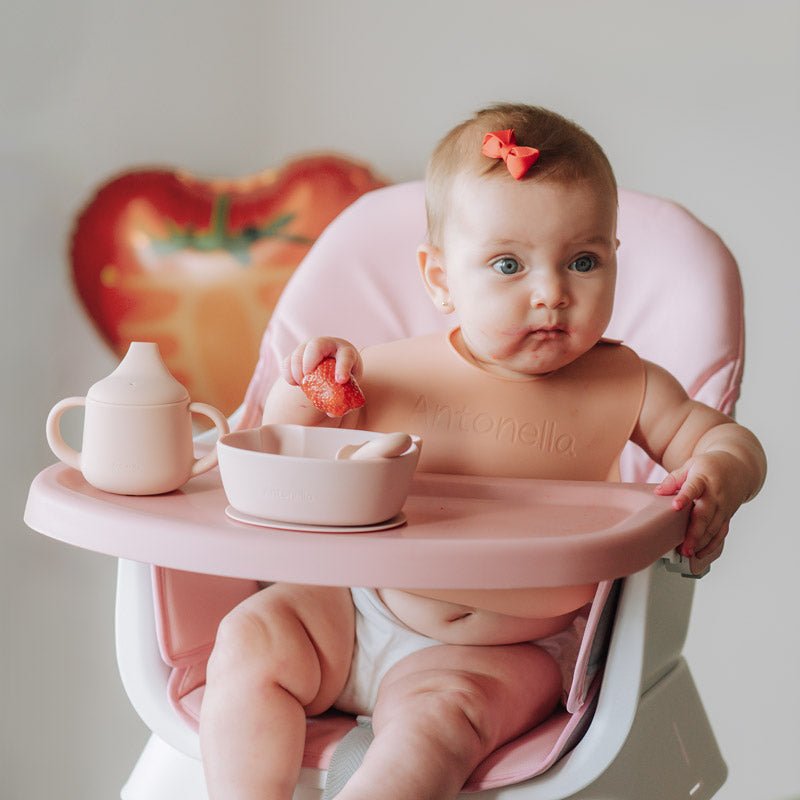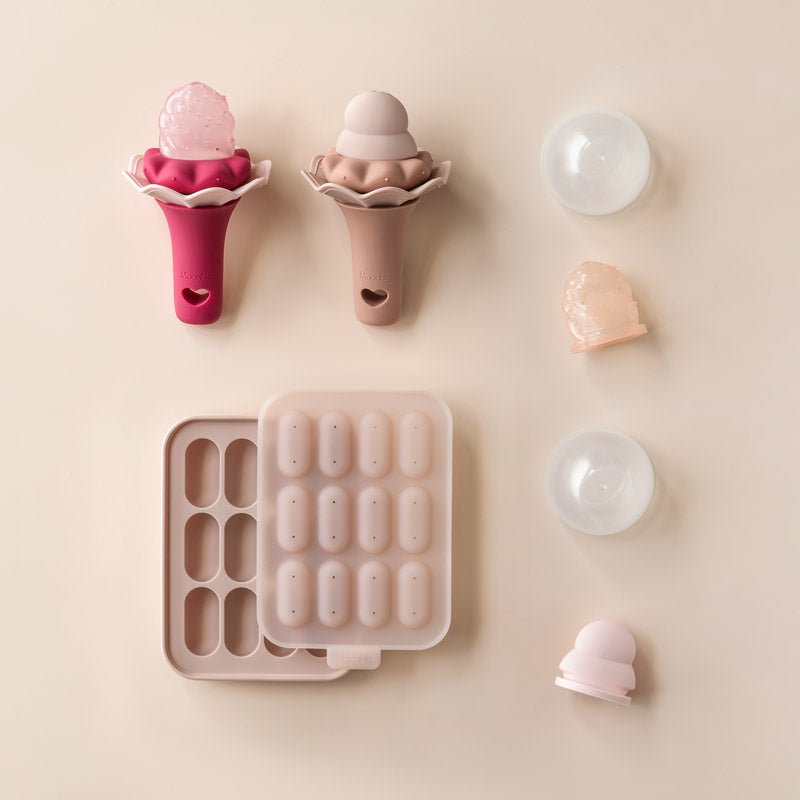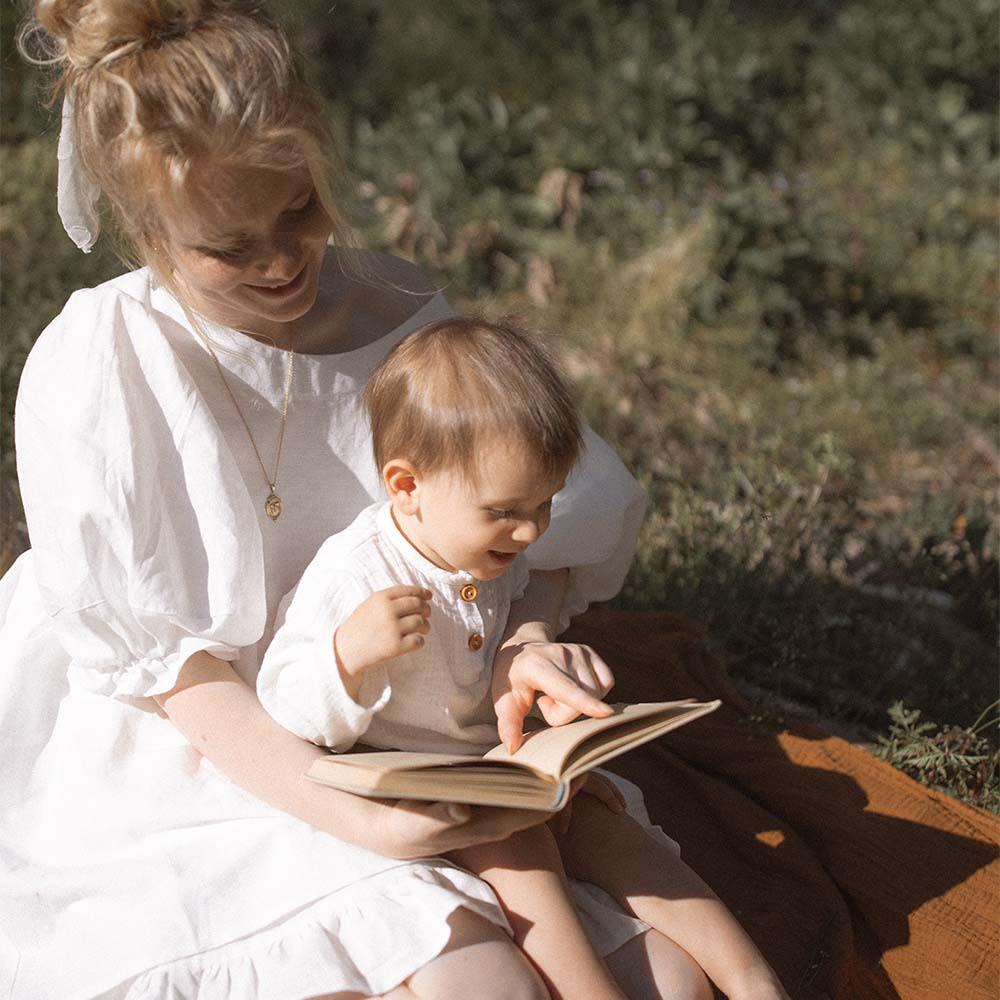If you don't have the space to give each child their own bedroom, you can put your little ones together in the same room! However, logistical challenges arise quickly, especially when putting a baby and toddler together.
It is normal for young siblings to share a bedroom, but age difference means a difference in sleep needs, waking in the night, and goofing off well past bedtime. Parents can follow a regular bedtime routine, use a fan, set slightly different bedtimes, or make tents over each bed to encourage sleep.
Every family and each child is unique, so ultimately, you'll have to work things out by trial and error to find a suitable arrangement that works for your family. Here are answers to common questions parents in the same boat ask early on.
Is It Okay to Have Young Siblings of Different Ages Share a Room?
Yes! Having young siblings of different ages share a room is totally okay and normal. Around school age, you may need to separate siblings based on gender, but little ones typically have no issues sharing a bedroom. Young siblings may even find comfort in sharing a room at night!
When preparing a room for your little ones to share, consider giving each child their own bed or space to sleep. It's not mandatory, and many prior generations and even siblings in some other cultures today share the same bed, but providing separate sleep spaces will help keep active sleepers from rolling over onto more passive sleepers.
Likewise, the nighttime sillies will be much easier to handle and calm in separate beds than in one shared bed.
Can a Toddler and Baby Share a Room?
Once your baby can roll over while sleeping and has a consistent nighttime sleep routine, you can move the baby into your toddler's room. I was able to shift one baby out at six months and another at nine months, so don't feel like your little one is behind the curve!
Here are a few tips from my own experience to keep in mind:
Use a Crib or Pack-and-Play
Put the baby in a crib or pack-and-play that is hard or impossible for your toddler to crawl into. Chances are that your toddler will be super excited to have a roommate and try to hug or sleep with the baby.
This behavior isn't ideal for obvious safety reasons, and if it persists, you may need to remove the baby from the toddler room for a few more weeks. While the baby sleeps with you a little longer, leave the crib in the toddler's room and consistently enforce a "no-crib rule."
Put the Toys Away at Night
Another common problem is your toddler sharing all the toys with the baby by tossing them into the crib at night. I ended up locking all but one stuffed animal away in the closet at night. When my toddler figured out the closet door, I locked the toys into the office at night, though I could have child-proofed the door knob.
This chore was only necessary for the first few weeks. Once the baby was a year old, I started to ease into making evening toy clean-up a toddler chore and allowed each one to pick a toy for bedtime. Then, I put a chime on the closet door to know when they were after the toys and disciplined accordingly.
You certainly don't have to do it the way I did. I was concerned about the older child smothering the baby with toys and books because that's what he did whenever he woke her up during daytime naps.
You could use a video monitor to watch and step in whenever your toddler is tossing toys into the crib. Or you could leave the door open so your toddler is less likely to sneak around. Whatever you choose, stay consistent!
Use a Monitor
A video or audio monitor in your kids' bedroom will help you quickly catch any dangerous or disobedient behavior. Early on, the concern is usually keeping the baby's bed clear--and this is a tough concept for your toddler to grasp!
A monitor showing what is going on in there will put your mind at ease. Relatively affordable options are available in most supermarkets or online.
Should I Put My Youngest Child to Bed Before the Oldest?
Whether you put your youngest child to bed before the oldest is up to your family's culture, routine, and each child's sleep habits. There is no one right way to do it! The goal is to ensure everyone gets to sleep as much as they need at a reasonable time.

How much sleep is "enough"? Here is a quick reference chart for baby and toddler sleep in a twenty-four-hour period (including daytime naps) (source):
Age |
Hours of Sleep in 24 Hours (including naps) |
4-12 months old |
12-16 hours |
1-2 years old |
11-14 hours |
3-5 years old |
10-13 hours |
Some kids run on less than the recommended sleep time, and some sleep even more. In my case, the youngest stayed up later and woke up earlier than the oldest but took a midday nap. So, I sent them to bed at the same time each night after following the same bedtime routine.
The oldest quickly learned to fall asleep despite the youngest's chatter and singing and slept through all the antics. In fact, whenever the youngest spent the night with me due to sickness, he didn't fall asleep easily. He wanted his sibling's chatter to fall asleep!
If your older child needs a perfectly quiet room to fall asleep, you may have to send the youngest to bed earlier. The different bedtimes also apply if there are more than a few years between your children because the oldest won't need to sleep as much.
How Do I Keep My Older Child Quiet While My Younger Child Falls Asleep?
Whether it's your older or younger child in the room, the odds are that one of them will stay up longer than the other most nights. Since little ones cannot sit still for long, they play, talk, sing, run around the bedroom, or pop out to ask for water and bathroom breaks.
For most kids, when they are tuckered out, they will konk out regardless of what the other sibling does. The trick is keeping the other quiet long enough for that to happen, especially after long, rainy days inside.
One method is going into the room whenever the children get too loud in their playing. Another technique is sitting in the room until they fall asleep. Some opt to set up tents designed to fit over toddler beds so that each child has a small, quiet space.
You could also set two different bedtimes, give quiet-time books and dim lights, set a moving star projector, play soft music, run a box fan, or plug in a noisemaker.
I used a combination of these methods and had to shift my strategy every few months to keep up with changes in their sleep needs. So, don't assume you can settle on one method and keep it for as long as your littles share a room--that's unrealistic.
Can My Older Child Read or Play Quietly in Bed While My Younger Child Falls Asleep?
Yes and no. It really depends on the age gap, the youngest's ability to fall asleep knowing his sibling is awake, and the older child's ability to stay still and quiet. If your children are within three years of each other and younger than school age, this method is not likely to work well.

However, some personalities will do this amazingly well! So, again, this comes down to your children's unique personalities and abilities. If the older child regularly stays up reading or playing quietly, it may be best to send the younger to bed first. Perhaps your older child is ready to sleep less.
Should I Use White Noise Machines or Music to Help My Children Fall Asleep?
You can! Babies who fall asleep to all the noise of life and family as infants may fall asleep easier and wake up sooner, while babies falling asleep to white noise may sleep deeper and longer (source).
As always, there is a catch: babies who learn to sleep with white noise always need that white noise to sleep well. Some adults already know this from trying to adjust to no white noise so they can hear their kids in another bedroom!
The white noise must also be consistent and rhythmic. A box fan, a white noise machine, relaxing instrumental music on loop, or a sleep podcast will work marvelously.
For a baby and toddler or two toddlers sharing a room, white noise may help drown out soft chattering or singing, encouraging littles to fall asleep faster. However, you'll have difficulty getting your kids to sleep if you do not have that white noise maker when traveling.
If you have more questions because your older toddler is surprising you with new tricks, check out 25 Questions First-time Parents Ask About Their Toddler's Development.
Should I Separate My Children Into Different Rooms If They Are Having Trouble Sleeping Together?
Possibly. Don't move too quickly when shifting kids around because they won't fall asleep at a reasonable time. It will take them two or three months to adjust well enough to get into a routine sleeping habit.
But if your baby and toddler or two toddlers consistently have trouble sleeping in the same room, waking in the middle of the night to play, or waking before sunrise over several weeks, you may need to find a way to separate them.
Sometimes, you don't have the space to separate your littles. So, you've got to get creative with lifestyle choices. Perhaps that means doing an earlier bedtime or two different bedtimes.
Maybe you need to put a clock in the room and set a morning alarm so that they can stay in their room to play after waking up and before that alarm goes off.
Evaluating Your Bedtime Routine
If your children do not fall asleep within an hour after bedtime, you need to evaluate what happens before bedtime. Do they get screen time? Are they drinking lots of liquid? Are they eating sugar?
Screen time, lots of fluids, sugary snacks, lots of activity with people, or lots of rowdiness after dinner and before bedtime will probably keep your little ones wired for several hours.
Try changing things up so that you avoid most of those for a few weeks to see if your children's sleep habits change.
I discussed bedtime routines in more depth in The Ultimate Guide to One-Year-Old Sleep: Tips and Tricks for Busy Parents. Read it for more ideas!
How Do I Handle It If One Child Wakes Up the Other in the Middle of the Night?
This will inevitably happen from time to time, but if it is a routine thing, you've got some options. First, you need to identify why one child consistently wakes in the middle of the night. Is it a need for the bathroom, hunger, coldness, or some other basic need?

You can easily wake your children up for a bathroom trip before you go to bed, which will mitigate midnight bathroom urgency. A healthy snack before bedtime and warm pajamas will take care of other common nighttime discomforts, too. Another thing you can do is transition out of daytime naps.
However, those tips will not help a child who tends to wake up between sleep cycles. One thing you can do is time a sleep cycle for your child (light sleep to REM sleep). This will typically be between an hour and an hour and a half.
Once you've identified that, try changing your child's bedtime slightly to make the typical nighttime wake up later. Sometimes, that shift (usually 30 minutes later or so) is enough to throw off the habit.
If you've tried all the above and one child continues waking to play at night, consider talking to your pediatrician about sleep patterns and ways to help your child sleep through the night.
In a Nutshell
It may seem daunting in those first weeks, but having two young siblings share a room successfully is possible. It's even possible for three or four siblings to share a room well, provided the space is large enough.
Keep your cool, be consistent, and stick to a regular bedtime routine. If worse comes to worst, you may have to stay up longer than your kids! In all seriousness, though, it's going to work out eventually. Hang in there!

